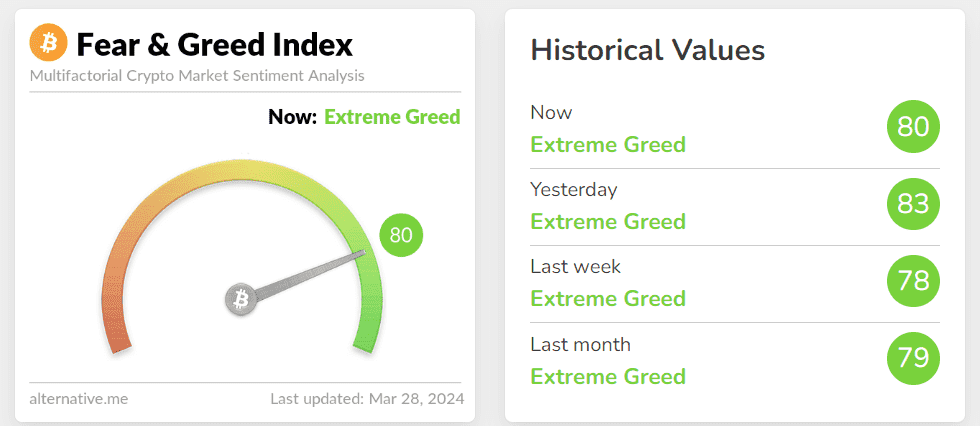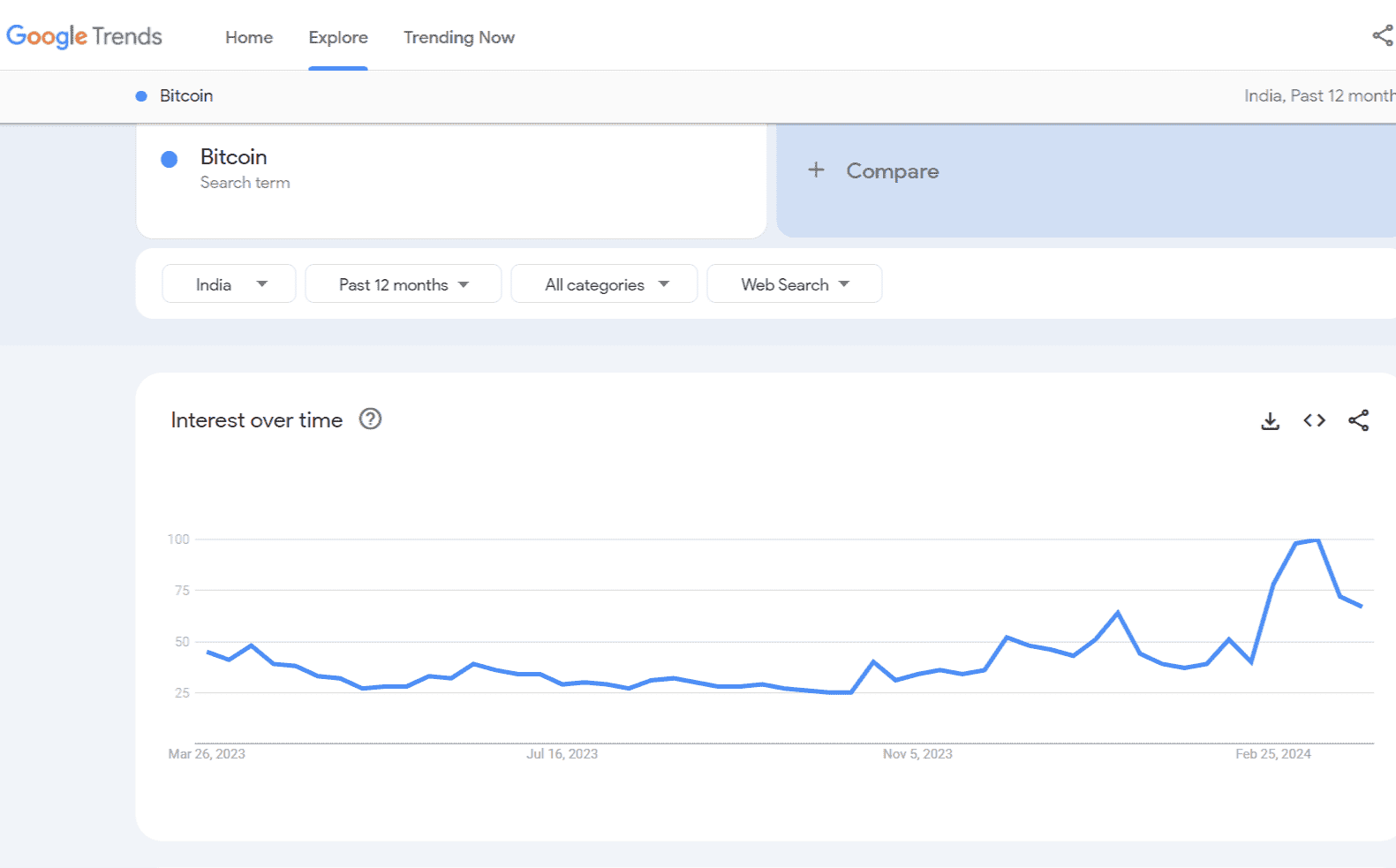
- Blockchain Council
- September 12, 2024
Summary
- When applying sentiment analysis, the major challenges are the limitations of mainstream NLP technologies when applied to a domain-specific problem and inaccurate assumptions about how sentiment is reflected.
- Cryptocurrency’s volatility and constant development present both opportunities and challenges for investors.
- Sentiment analysis helps in understanding the overall attitude towards cryptocurrencies by analyzing tremendous amounts of data.
- Decoding emotional trends is the primary benefit of sentiment analysis, allowing traders to identify dominant emotions like optimism or fear.
- Sentiment analysis offers predictive potential, suggesting how market sentiment might affect prices.
- However, its effectiveness relies on combining it with other analysis methods and remaining cautious of potential limitations inherent to the technology.
- Crypto market sentiment analysis should be used along with other methods of analyzing market trends of crypto assets.
Introduction
Cryptocurrency is a digital revolution driven by passionate communities and innovative technology called Blockchain. However, the volatile nature of cryptocurrencies and their ongoing development present investors with opportunities as well as challenges.
Therefore, it is important to understand the market sentiment. Crypto market sentiment refers to the overall attitude or feeling of investors and traders towards the cryptocurrency market at a given time. It plays a crucial role in driving crypto price movements. But how do you understand the crypto market sentiment?
This is where sentiment analysis steps in. It helps in analyzing the overall attitude people have towards cryptocurrencies. But how?
In this article, we will understand what sentiment analysis is and what role it plays in crypto trading. By the end of this article, you will also get to know some of the most popular crypto sentiment analysis tools that will take your trading game to a whole new level!
What Exactly is Crypto Sentiment Analysis?
Crypto sentiment analysis can be defined as a fundamental concept for deeply understanding the behavior of crypto markets. This analysis focuses on assessing the attitudes, sentiments, feelings, and moods associated with a digital currency. It scans vast volumes of data and determines the sentiment of the market using machine learning (ML) and natural language processing (NLP) techniques. Moreover, it can also provide valuable data on future trends in the volatile crypto market. In simpler terms:
- If a sentiment analysis is positive, then the crypto market is bullish.
- If a sentiment analysis is negative, then the crypto market is bearish.
Significance of Sentiment Analysis in Crypto Trading
In the ever-evolving landscape of cryptocurrency trading, understanding the emotions of the market has become crucial for making informed decisions. Let’s understand how crypto sentiment analysis can be a game changer for cryptocurrency traders:
Decodes Emotional Trends
The first and foremost benefit of sentiment analysis is that it decodes emotional trends.
Sentiment analysis is the process of analyzing market participants’ emotional tendencies. Traders and analysts can identify dominant emotional states, such as optimism, anxiety, enthusiasm, or skepticism, by evaluating opinions expressed on a variety of channels, including social media, news stories, and online forums.
Predictive Insights
Another remarkable aspect of sentiment analysis lies in its ability to perform predictive potential. Traders’ feelings can sometimes predict how the market will move. Prices might go up if people are excited about a certain cryptocurrency (positive sentiment). On the other hand, if everyone’s feeling nervous (negative sentiment), prices could go down.
Informed Decision-Making
By decoding emotional trends and offering predictive insights, sentiment analysis acts as a compass for traders and investors, guiding them through the tumultuous waters of the crypto market. By combining insights from sentiment analysis, investors can make informed decisions, aligning their strategies and approaches with persisting market sentiment.
Whale Monitoring
Crypto sentiment analysis helps to spot significant investors, commonly referred to as “crypto whales.” Observing them can offer valuable perspectives on market sentiment. These influential holders wield considerable power over prices, particularly within smaller-cap cryptocurrencies. Tracking their actions enables traders to grasp market sentiment dynamics and foresee potential price shifts.
Risk Management
Apart from all the benefits, this analysis also serves as a valuable tool for risk management. By tracking sentiment, traders can get clues about what the market might do next and make adjustments to their investments.
How to Perform Crypto Market Sentiment Analysis?
Step 1: Data Gathering
To understand the market’s tone, consider gathering and cross-checking multiple social media platforms where traders discuss a digital asset. Joining Telegram channels, Reddit discussions, Discord, and official project forums can be helpful in engaging directly with the community.
It is always recommended to keep an eye on mainstream financial news outlets and crypto-focused blogs for expert opinions and analyses. These can reveal broader market sentiment and potential trends.
Staying updated on crypto-related news from trusted cryptocurrency media platforms like CoinDesk, CoinTelegraph, and others can definitely help you as a trader in the long run. You can use APIs or web scraping techniques to collect relevant textual information in real time or periodically.
Step 2: Preprocess the Data
After collecting the data, you need to clean and prepare it for sentiment analysis. This step involves removing noise, such as URLs, special characters and emojis, to ensure that only relevant data is collected for analysis. Further, standardizing the text by converting it to lowercase and removing punctuation aids in consistency. Tokenization breaks the text into individual words or phrases. Meanwhile, removing stop words eliminates commonly occurring words with little semantic value.
Step 3: Analyzing the Data
Once you have your pre-processed data, focus on overall sentiment, shifting trends, and influential voices, if any.
| Sentiment Polarity | Is the general mood positive, negative, or neutral towards a specific digital currency or the market as a whole? |
| Shifting Trends | Are there sudden changes in sentiment? These could indicate potential turning points in the market. |
| Influential Voices | Who are the key figures conducting the conversation? Are they experts or simply loud voices?
|
In this step, it is important to choose an appropriate sentiment analysis approach. For instance, Lexicon-based analysis utilizes sentiment lexicons. These are dictionaries containing words annotated with their associated sentiment scores (positive, negative, neutral).
Meanwhile, machine learning models, such as Support Vector Machines or Naive Bayes, or deep learning models like Recurrent Neural Networks or Long Short-Term Memory networks, can also be trained to perform crypto market sentiment analysis. Labeled data can be handy in such types of training.
Step 4: Data Visualization
Visualizing the sentiment analysis results through charts, graphs, or other visualization techniques aids in interpretation. By examining these visualizations, one can understand the prevailing sentiment in the cryptocurrency market and its potential impact on price movements and market trends. Identifying correlations between sentiment and market behavior, such as price changes or trading volumes, allows for actionable insights to inform trading decisions, risk management strategies, or market sentiment forecasting.
Things to Remember
Here, it is important to be cautious of fraudsters once you have collected data from multiple sources and analyzed it. Fraudsters can pose as project officials on these platforms. Always conduct thorough research before making any judgments.
Apart from that, it is always suggested to:
- Be aware of manipulation: Social media sentiment can be manipulated. Be cautious of overly positive or negative information.
- Focus on quality over quantity: Don’t just chase the most popular opinions. Look for well-reasoned insights from credible sources.
- Don’t rely solely on sentiment: Use this analysis as a guide, not a guaranteed predictor of market movements.
Tools and Techniques for Crypto Sentiment Analysis
| Tool/Technique | Description |
| Sentiment Indices | Fear & Greed Index, Nansen, etc., offer a snapshot of market sentiment by amalgamating trading volume, social media mood, and volatility. |
| Sentiment Analysis APIs | APIs like Google Trends and Twitter Sentiment Analysis provide data on sentiment trends, aiding decision-making. |
| Social Media Analysis | Platforms like Twitter, Reddit shape sentiment; analyzing user emotions offers insights into market trends. |
| On-chain Analysis | Tracks transaction volume, wallet activity, and network growth for informed trading strategies. |
To analyze sentiment in the crypto market, it is essential to understand and comprehend the complex nature of sentiment analysis tools and techniques. Choosing the right sentiment tools and techniques can be a game-changer for any crypto trader. There are various tools available to analyze the sentiment of the crypto market. Let’s talk about the most popular ones:
Crypto Market Sentiment Indices
Certain indexes, such as the Fear & Greed Index and Nansen, offer a detailed summary of the general mood of the crypto market. These indexes help traders with a comprehensive crypto market by combining variables, including trading volume, social media mood, and market volatility.
For instance, the Fear and Greed index generates a score between 0 and 100 by combining emotions and sentiments from multiple sources. This score categorizes the market sentiment from extreme fear (ranging from 0-24) to extreme greed (ranging from 75-100).
Figure illustrates Fear and Greed index by alternative.me
Sentiment Analysis APIs
Sentiment Analysis APIs (Application Programming Interfaces) can also play a vital role in decoding the crypto sentiments. Trading platforms can incorporate APIs, such as Google Trends, Twitter Sentiment Analysis API, or other APIs that can definitely assist traders in making more informed crypto decisions. For instance, Google Trend can provide sentiment analysis data based on specific keywords.
Here’s a look for the keyword ‘Bitcoin’. Image via Google Trends
Social Media Sentiment Analysis
As already mentioned, popular social media platforms such as Twitter and Reddit play a crucial role in shaping the crypto market sentiment. By understanding the emotions expressed on such platforms, traders can gain valuable insights into cryptocurrency market trends and expert opinions.
On-chain Analysis
Using a combination of technical and fundamental research, on-chain analysis is another effective tool for creating more informed crypto trading strategies. This analysis is able to track transaction volume, wallet activity, and network growth, providing a contextualized view of the crypto markets through actionable insights.
Here, it is important to note that Cryptocurrency sentiment analysis should be a necessary tool for any trader to decide whether the time is right to invest or sell a crypto asset. However, crypto market sentiment analysis should be used in conjunction with other additional factors such as analyzing crypto whitepaper, identifying its utility, checking how the team is handling its social media channels, evaluating its price history, etc.
If you’re new to the crypto space and looking for the perfect way to get started, enroll into Certified Cryptocurrency Expert™ certification and start your crypto trading journey today!
Popular Crypto Sentiment Analysis Tools
Glassnode
It is an on-chain data and intelligence platform that collects data from different sources for blockchains. With the help of this platform, investors can get to know crucial metrics such as transaction data, wallet holdings, etc., which can be beneficial in making informed investment decisions.
Coin Metrics
Another popular platform is Coin Metrics, utilized for both off-chain and on-chain research. It is known for offering data on different indices, price reference rates, market visualization tools, and much more. Moreover, crypto traders can also track Twitter feeds, which helps them track crypto market sentiment.
Nansen
Nansen is a leading analytics platform that offers deep insight into a wide range of on-chain activities. It reveals the digital currencies top influencers players are holding or selling and also recognizes wallets with the highest returns over various time spans.
Santiment
This platform helps traders identify and analyze market behavior to make the best crypto investment decisions. With Santiment, traders don’t have to be dependent solely on prices but leverage custom trading strategies on the basis of on-chain data and social accomplishments.
LunarCrush
Another popular platform on the list is LunarCrush, which collects data from multiple social media platforms to understand user sentiment. It helps traders identify influential figures who have a pull on the market movement and track their social media activity. By looking at influencers’ activities, traders can gain valuable crypto insights.
However, it is always recommended that you do your own research before you pick any crypto analytics tool in order to make an informed decision.
Limitations of Crypto Sentiment Analysis
When applying sentiment analysis to crypto assets, we are likely to encounter two main challenges:
- Limitations of NLP technologies when applied to a domain-specific problem
- Inaccurate assumptions about how sentiment is reflected in social media.
Domain-Specific Challenges for NLP Technologies
The rapid rise of sentiment analysis tools has brought both ease of use and a surprising challenge. While developers can now easily integrate sentiment analysis into applications with simple APIs, these tools often need help understanding the deeper meaning behind words.
For example, while trying to analyze the news headline “Bitcoin ETF Approval Looms,” basic sentiment analysis might only pick up on positive words like “approval” and “looms.”
However, understanding the true sentiment of the crypto market requires comprehensive knowledge of financial markets and specific terms like “ETF.” Without this context, the tool might miss the nuanced meaning surrounding an event that could significantly impact the cryptocurrency market. This may lead to bulltraps.
Misinterpretation of Sentiment in News and Social Media
Misconceptions regarding the representation of sentiment in news and social media present the second challenge. While news can be a beneficial source of information, it is useless in sentiment analysis as it maintains a neutral tone. However, social media operates differently. It reflects opinions varying from individual to individual, leading to inaccurate sentiment analysis findings.
High Amount and Velocity of Data
The vast crypto market generates a high amount of data at a high velocity. This makes it difficult to process and analyze the true market sentiment in real-time. This challenge necessitates robust and more advanced data processing tools and techniques to effectively manage the sheer amount of information.
Apart from these challenges, cryptocurrencies come with regulatory and ethical challenges that can’t be overlooked. Ensuring the ethical use of data while protecting users’ privacy is a significant consideration in sentiment analysis.
Bottom Line
The ever-changing landscape of cryptocurrencies demands a deeper understanding of market sentiment. Sentiment analysis serves as a useful compass for investors navigating the volatility of the cryptocurrency market by interpreting emotional tendencies and providing predictive insights. Its efficacy, however, depends on integrating it with other analytic techniques and exercising caution on any potential technological limitations. Combining sentiment analysis for cryptocurrency with other techniques gives investors a more complete picture and increases their confidence when navigating the cryptocurrency market.
If the crypto world fascinates you, then globally recognized certifications like the Certified Cryptocurrency Auditor™ and Certified Cryptocurrency Trader™ can certainly take your career to the next level!
Frequently Asked Questions
Crypto sentiment analysis focuses on what?
- Crypto sentiment analysis focuses on assessing the attitudes, sentiments, feelings, and moods associated with a digital currency.
Should we only consider sentiment analysis in crypto trading?
- Cryptocurrency sentiment analysis should be an integral tool for any trader and investor to decide whether the time is right to invest or sell a commodity.
- However, crypto market sentiment analysis should be used in conjunction with other methods of analyzing market trends of digital currencies.
How can on-chain analysis be helpful in crypto trading?
- On-chain analysis can track transaction volume, wallet activity, and network growth, providing a holistic and contextualized view of the crypto markets through intelligible and actionable insights.
Are there any limitations linked to sentiment analysis?
When applying crypto sentiment analysis, we are likely to encounter two main challenges:
- Limitations of NLP technologies when applied to a domain-specific problem
- Incorrect assumptions about how sentiment is reflected in social media.
What are the benefits of Sentiment Analysis in Crypto Trading?
- Some of the major benefits of sentiment analysis in crypto trading include decoding emotional trends, providing predictive insights, generating informed decisions, and managing risk.







































































 Guides
Guides News
News Blockchain
Blockchain Cryptocurrency
& Digital Assets
Cryptocurrency
& Digital Assets Web3
Web3 Metaverse & NFTs
Metaverse & NFTs
